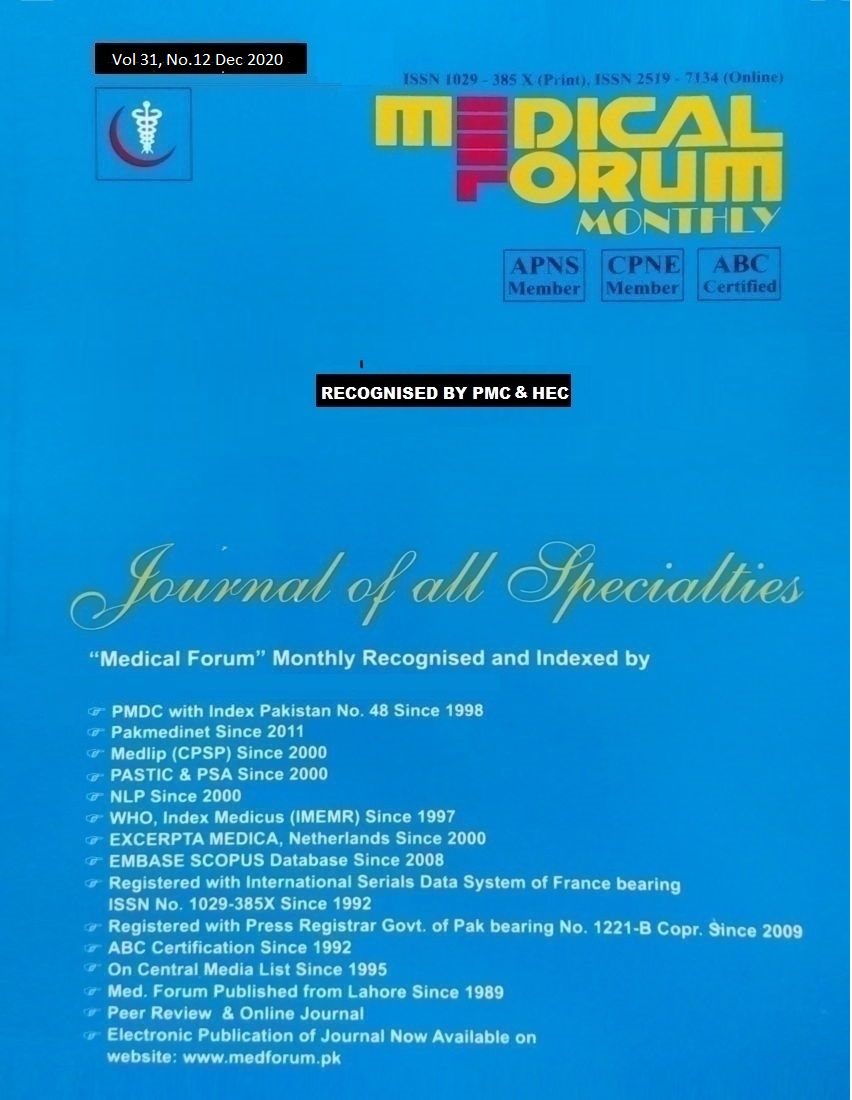
39. Health Behavior of School-Aged Children in Sialkot
Usman Nasir1, Rabea Nasir3, Ghazala Khalid2, Rashid Siddique4, Nimra Ikram1 and Akmal Khurshid Bhatti1
ABSTRACT
Objective: To determine Health Behavior of School-Aged Children in Sialkot.
Study Design: Observational Study
Place and Duration of Study: This study was conducted at the Sialkot Medical College Sialkot during Jan 2019 to Dec 2019.
Materials and Methods: Health Behavior in School aged Children (HBSC) questionnaire was used in this study. Questionnaire survey was carried out in 2 schools of Sialkot. One school was private and one school was public. There were 300 participants and majority of them were 14 and 15 years old. Health behavior was measured with questions concerning adolescent’s nutritional habits (breakfast, fresh fruit and vegetable, sweets, fast food and soft drinks with sugar consumption), health-risk behavior (cigarette use, injuries) and physical activity. Statistical data was analyzed using the statistic package SPSS 15.0 for Windows
Results: Two thirds (78.5%) of respondents thought they are in good health and just 4% claimed having excellent health. Results of this work showed, that forty one percent students of school exercise two-three times a week and seven point three percent less than once a month. It was determined that more than half of Sialkot teen agers eat morning food every day on end of the week, but on end of the week less than one third have morning food at home. One third of respondents stated, that eat fresh vegetable and 20.1% of then eat fresh fruit every day. Unhealthy diet products such as sweets, soft-drinks with sugar, fast food adolescents consumed (from 0% till 24.6%) every day or 4-6 times a week. Current study indicates that girls were less habitual to use carbonated drinks and junk foods as compared to opposite sex. They ingest more balanced diet. The results showed that 12.1% of adolescents reported smoking once a week. Statically significant differences were found among respondent gender and injuries. Young Girls were harmed more often than boys in the past twelve month. Teenagers in Sialkot thought they are in excellent health less frequent than teenagers in Lithuania. Study result showed that statistically significant differences were found between breakfast consumption on weekends, nutritional habits, smoking of adolescents in Sialkot.
Conclusion: Adolescents in general experience good health in Sialkot. Physical activity of the majority adolescents did not meet the global WHO recommendations for school-aged children. Children above twelve years of age are used to intake raw vegetables frequently than the raw fruits. Majority of adolescent’s unhealthy diet products consumed rarely. Less beneficial foods is being more frequently ingested by males as compared to females. Teenagers in Lithuania enjoy very good health more often than teenagers in Sialkot. Health behavior of teenagers were different in Sialkot.
Key Words: Health habits, Children above 12 years, nutritional habits, health risk behavior
Citation of article: Nasir U, Nasir R, Khalid G, Siddique R, Ikram N, Bhatti AK. Health Behavior of School-Aged Children in Sialkot. Med Forum 2020;31(12):166-170.
